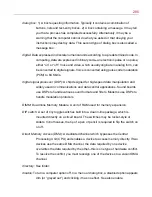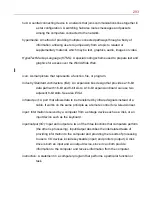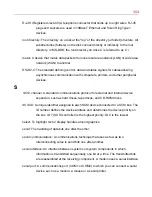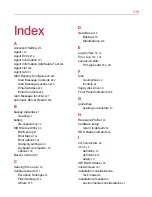
299
operating system: A set of programs that controls how the computer works. Operating
system functions include creating programs and data files, and controlling the
flow of information between the processor, memory and devices. Examples of
operating systems used by computers are MS-DOS, Windows 95 and Novell
NetWare.
operating system disks: The disks containing the operating system. Also known as
system disks.
output: The results of a computer operation. Familiar forms of output are information 1)
printed on paper, 2) displayed on a screen, 3) sent through the serial port or
internal modem, or 4) stored on disk. See also input/output (I/O).
P
palette: In some programs, a palette is a collection of drawing tools, brush widths, line
widths, and colors. In other programs, the palette determines the number of
colors that can be displayed on the screen.
parallel: Two or more processes or events that can happen at the same time without
interfering with each other.
parallel interface: A type of information exchange that simultaneously transmits all the
bits representing a character. It uses a separate line for each data bit in a byte.
In contrast, a serial interface transmits characters along a single data line one
bit at a time, making it much slower than a parallel interface.
parity: A method in serial communications of making sure that the information received is
the same as the information that was sent. It consists of adding an error
detection bit to a group of data bits, making the sum of the bits either odd or
even. When you’re using a modem to connect to another computer, you can
set parity to none, odd or even. In general, you should set parity to none,
unless you’re requested to do otherwise.
password: A unique string of characters used to identify a specific user or group of users
for security purposes. A password prevents unauthorized use of the computer.
Summary of Contents for 3200
Page 1: ... ...
Page 309: ...309 ...














































